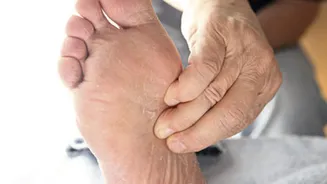Kegels: What & Why
Kegel exercises, also known as pelvic floor exercises, are designed to strengthen the muscles that support the bladder, uterus, and bowel. Strengthening
these muscles can lead to many health benefits. Understanding the 'why' behind Kegels is essential. For women, these exercises offer a proactive approach to prevent or manage various issues. They can improve bladder control, reduce the risk of incontinence, and even enhance sexual function. Regular Kegels can boost blood flow to the pelvic region, thus improving overall health. Engaging in Kegels regularly, can promote better posture and core stability. Incorporating Kegels into your daily routine is an investment in your well-being, providing lasting benefits that empower you to live a more comfortable and confident life. The effectiveness of Kegels lies in their consistent application, making them a simple yet powerful tool for women of all ages.
The 5-Minute Routine
Performing Kegel exercises requires minimal time and can be done anywhere. First, identify the correct muscles, which are the ones you use to stop the flow of urine. You can practice this while urinating to get a feel for the muscles. Once you have identified the correct muscles, begin by sitting comfortably. Engage the pelvic floor muscles by squeezing them as if you are trying to stop urination. Hold the squeeze for a few seconds, typically 3 to 5 seconds. Relax the muscles completely and count down the same amount of time. Repeat this process 10–15 times. Then, do the same thing, but quickly squeeze and release to strengthen fast-twitch muscles. It's recommended to do this exercise routine three times a day. Consistency is the key to seeing results. Over time, you can gradually increase the hold time. It's important to breathe normally throughout the exercise. Proper breathing helps prevent strain. By following this simple routine, you can fortify your pelvic floor and experience the associated benefits.
Who Can Benefit?
Kegel exercises are beneficial for a wide range of women. They are particularly helpful for those who have experienced childbirth, as pregnancy and delivery can weaken the pelvic floor muscles. Women who are experiencing issues with bladder control, such as stress incontinence (leaking urine when coughing, sneezing, or laughing), also stand to gain significantly from Kegels. This exercise can also benefit women as they age. Menopause can lead to decreased muscle tone. Implementing Kegels can counteract this. Athletes, who often have to endure high-impact activities, can benefit from them to provide core stability. Women who want to improve their sexual function can also experience enhanced sensations and better orgasms. In essence, Kegel exercises are suitable for any woman looking to boost her pelvic health, regardless of age or fitness level. Start practicing these exercises today for a healthier, more fulfilling life.
Avoiding Mistakes & Tips
To get the most out of Kegel exercises, it is important to avoid common mistakes. Avoid using other muscles, like the abdomen, buttocks, or thighs, which can reduce their effectiveness. Focus on squeezing and relaxing only the pelvic floor muscles. It's also important to avoid holding your breath, as this can increase pressure and strain the pelvic floor. It is important to exhale as you squeeze and inhale as you relax. Consistency is essential. Making Kegels a daily habit is more effective than doing them sporadically. If you're unsure whether you are doing the exercises correctly, you can consult with a healthcare professional or a pelvic floor physical therapist. They can provide personalized guidance and ensure you’re targeting the right muscles. With practice, you'll develop the proper technique, leading to better results. By integrating these tips into your routine, you can maximize the benefits and improve your overall well-being.












